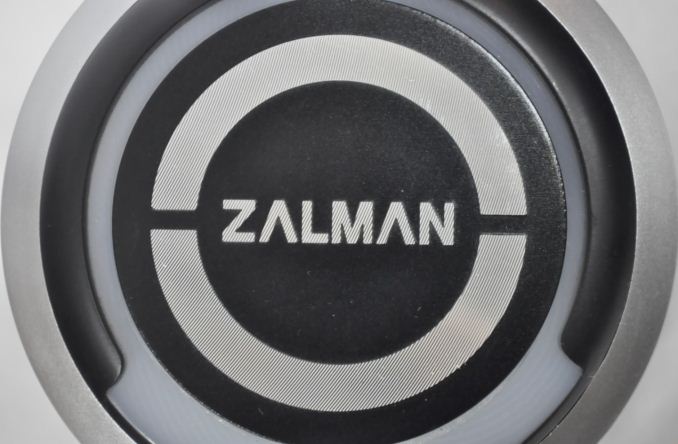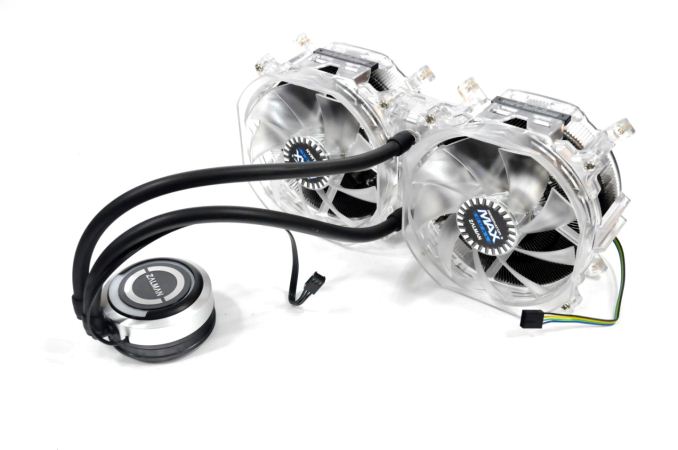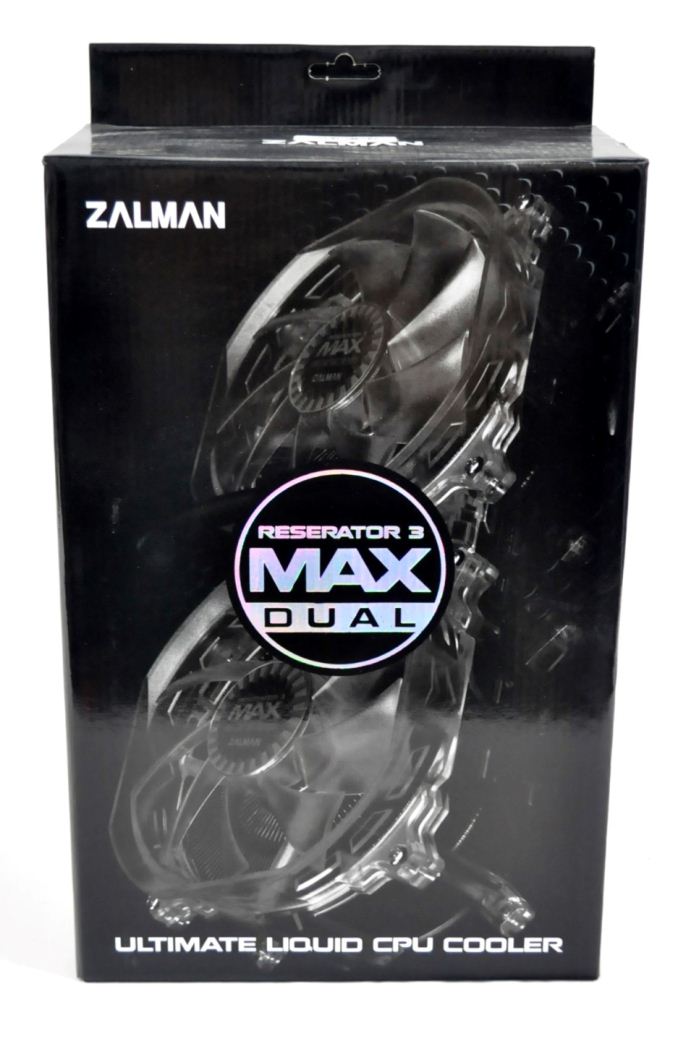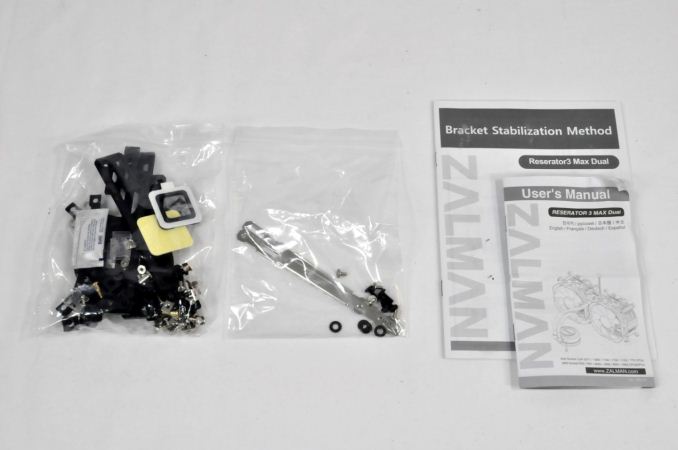Zalman Reserator 3 Max Dual CPU Cooler Review
by E. Fylladitakis on August 19, 2014 6:00 PM EST
Introduction
A few months ago, we had a look at many all-in-one liquid cooling solutions, ranging from low cost solutions to enthusiast-grade products. However, regardless of their size and capabilities, all of those kits were quite similar to each other. Today we have something that truly stands out from the crowd, Zalman's latest liquid-cooling solution, the Reserator 3 Max Dual.
Zalman's engineers are no amateurs when it comes to liquid cooling; they actually are one of the first companies that shipped liquid cooling solutions as complete retail products, so they have extensive experience in that particular field. The Reserator 3 Max Dual is being advertised as the "Ultimate Liquid CPU Cooler" and it currently retails for $140 including shipping, making it one of the most expensive all-in-one solutions available. It's clearly aimed at overclockers and enthusiasts, but is Zalman's newest creation worthy of such a heavy title and premium price? We will find out in this review.
Packaging and bundle
We received the Reserator 3 Max Dual in a large, dark cardboard box with little aesthetic appeal, as the artwork is based on a picture of the radiator. Blister plastic packaging protects the cooler inside the box. The bundled items are supplied into two plastic bags, entirely unorganized. Besides the hardware required for the mounting of the cooler and the instruction manuals, Zalman does not provide anything else. The thermal paste is the weak link of the bundle, as only a single dose of average thermal paste is supplied, when most users would expect at least a small syringe with high-quality thermal paste with such a premium product.













52 Comments
View All Comments
garadante - Thursday, August 21, 2014 - link
Apologies for the several typos throughout. Curse the lack of an edit button!AnnihilatorX - Thursday, August 21, 2014 - link
garadante I agree with the E.Fyll here actually. It is far more accurate to compare different coolers using a scientific method, that is, isolate the system and controlled for all other variables. The result in this analysis is valid in that the performance delta between different coolers indicate accurately their relative performance across ALL scenarios, this is because ambient variables such as CPU, systems, are controlled for.Yes, the absolute temperature values won't be indicative of a real system, but it doesn't matter, as ambient temperature would have affected different users anyway. No matter how the author sets up the real rig, the results would mean different thing to different people. In this scientific way, it is less work for the author and less variables to control for, and more accurate as well (can't accurately control for CPU power load without special equipment like the one used here).
garadante - Thursday, August 21, 2014 - link
But please answer my primary point: testing with uniform fans and uniform thermal paste. Why is this unreasonable to ask for? He's willing to test a dozen and a half CLCs, what I'm saying is there are quite a few people who would be interested in seeing a third of that, just the most interesting ones, with 2 or 3 different types of fans each, focusing on high CFM, high static pressure, and a mixture of the two in order to get a scale of what changes favorably with certain fans for each radiator. Then we can find out if a particular radiator excels at quiet operation with the right fan. Or if another excels at absolute delta T. Or what we can expect to change in performance if we go for a fan a little bit louder but more powerful, or the reverse where it's quieter but a little less powerful. It would show us tradeoffs and illuminate a whole deeper (and extremely relevant) aspect to the world of liquid cooling. Fans with radiators are hugely important but E.Fyll gives it no thought to explore and inform his readers.Death666Angel - Friday, August 22, 2014 - link
"You're new to working for Anandtech, and so you should know that you've joined a well established community. We welcome you gladly to do what you can to raise the standards here even higher, but you cannot expect to do things your way when its against what the community desires."Wow that's condescending. And your assumption to represent the whole of the Anandtech community is quite arrogant as well.
I personally am fine with his approach and testing methodology. If you want to know the performance of thermal paste, look at one of the tens of reviews that show a difference between the best liquid metal ones and the cheapest of about 5K. And in that narrow a space, differentiating between one thermal paste and another without alternating other factors becomes a problem. I have seen tests where your AS5 performs very badly and others where it is in the middle of the pack. This is due to different application of the paste (distribution and volume) and also the pressure between the heatsink and the IHS. If that varies from one run to another even a little, it can have great consequences when we are talking about fractions of a K determining the position of the paste in the ranking.
Using a few different fans is a more reasonable request. But then the comments would just shift from "why are you only using the default package stuff" to "why are you not using the fan I am most fond of and instead use these other 3 I don't care for".
garadante - Saturday, August 23, 2014 - link
The simple fact is of my many years spent here I've never, ever seen one of the writers at Anandtech post such hostile and condescending posts towards comments of their readers, especially with such regularity as E.Fyll. Perhaps the way I phrased it came off too strong but that's simply what I see and it bothers me, because E.Fyll -is- new here. He was hired on in the last batch, and honestly I'm sad to see him taking over articles from previous writers who did a better, more friendly job reviewing products.DanNeely - Tuesday, August 19, 2014 - link
You've captured the utter fail of E. Fylladitakis's thermal testing. Absolutely reproducible and absolutely meaningless.garadante - Wednesday, August 20, 2014 - link
The only usefulness I can see is relative comparison of CLCs. But other than that yeah, no useful meaning from these results as the test stands now.dragosmp - Wednesday, August 20, 2014 - link
This "only" usefulness is exactly what's needed to decide the best cooler. It may be because I do this as part of my work, but the °/W is the only thing we need to discern between the different cooling configs.I have two points to make:
1. Such a cooler is a complex system and it is described with a number, the °/W. This is simplistic, but sufficient because nobody will add turns to the electric motor of the pump to boost pressure and modify the flow to change the type of flow from laminar to turbulent (if that was even possible). The slope of the rise in °/W with the load as well as the 7V testing (for the pump too if I got it right) points towards the bottleneck. It's unlikely that's the pressure of the pump, and also the type of flow of the air in the radiator fins; I'd point more towards a lack of °/W of the CPU block or too tight tubes.
2. The temperature delta is of course between the equivalent CPU heat-spreader and the ambient, how could it be any other way? You agree I think that per any CPU architecture the thermal conductivity between the die and the heat-spreader is within very tight margins, from the hat I'd pull a number such as 0.2°/W ==> 20°C of die temp rise for every 100W.
To sum up: @E.F. - great article, as techie I understand the methodology, the results are perfectly usable. To "translate" these results into what someone might compare to a CPU die temperature it would be enough to put a table with average thermal resistance per architecture of CPU: say SandyBridge 0.15 °/W, Ivy 0.2 °/W, Haswell-E 0.12 °/W etc etc etc and anyone could compute their die temperature from the results you posted. (I give you no one knows precisely what the thermal dissipation actually is in a CPU so prediction of die temp if fraught with peril even when knowing the Rth, but hey...)
kwrzesien - Wednesday, August 20, 2014 - link
Now that would be the sort of additional analysis and insight that AnandTech is famous for! In fact not just a table, but a few pages running through test setups on an AMD chip or two (APU & FX) and about five Intel’s: Core i3 Haswell, Core i7 Sandy, Ivy & Haswell (i7-x770K) and a 2011 socket chip like the 4930K or the X (sometimes those seem to be more available to you guys, which is just fantastic for you but the K is the part everyone actually buys - and I'd argue would be the better one to test since it isn't a perfect die so it usually runs at a higher voltage).To top it off do each of those at stock and overclocked and then chart all of those TRA's (thermal resistance per architecture - nice job drago!). Then do a i7-4790K just to show that it still sucks.
I think you would find a few very interesting things. One is that at 32nm the cores have more surface area and thus are able to dissipate their heat better, while the change to 22nm AND the TIM of Haswell has combined to create a localized heat transfer bottleneck between the die and the IHS. There isn't a thing that any air or water cooler can do to help that, you need liquid nitrogen or some kind of freon chilled refrigeration unit that could drop the temperature of the heatsink plate and thus IHS low enough to create a much higher delta T for the die-to-TIM-to-IHS interface to increase the heat transfer rate. Nitrogen isn't practical but I honestly wonder if they couldn't make a Reserator 1 v2-like device that was a mini-AC unit with freon. Of course nobody wants a condensate line running out of their PC, but I'm sure someone could figure something out...
Or Intel could have made Devils Canyon a product worth buying by soldering the IHS the same way it does on the "E" and Xeon chips. They would have had a big win on their hands if they had done that, even if Haswell still couldn't overclock that well for whatever reason.
We will know more shortly when Haswell-E drops, which will be 22nm, six or eight Haswell cores and built with a proper soldered IHS. If it's a 22nm heat density issue then E should have a little better heat-transfer properties due to the soldered IHS. If it's a frequency limit with the Haswell cores on 22nm then it will stop at 4.7 GHz (or lower) no matter what. Which will leave the question of whether Broadwell will clock better or have we seen the end of those days?
bludragon - Wednesday, August 20, 2014 - link
This is not quite right, since the °/W of the cooler will change depending on the surface area it is attempting to cool. For example, one cooler (lets say with a thin copper base on the water block, but a very large radiator) might work very well across a 30x30mm (900mm2) surface, but if you were to concentrate the heat on a smaller 10x18 (177 mm2) it might work less well than one with a thicker base on the waterblock and a smaller radiator, or even an air cooler which has a thicker base.